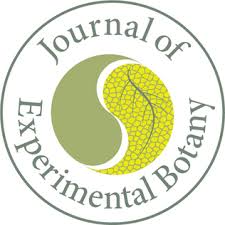Ver ítem
- xmlui.general.dspace_homeCentros e Institutos de InvestigaciónCICVyA. Centro de Investigación en Ciencias Veterinarias y AgronómicasInstituto de BiotecnologíaArtículos científicosxmlui.ArtifactBrowser.ItemViewer.trail
- Inicio
- Centros e Institutos de Investigación
- CICVyA. Centro de Investigación en Ciencias Veterinarias y Agronómicas
- Instituto de Biotecnología
- Artículos científicos
- Ver ítem
A candidate gene survey of quantitative trait loci affecting chemical composition in tomato fruit
Resumen
In tomato, numerous wild-related species have been demonstrated to be untapped sources of valuable genetic variability, including pathogen-resistance genes, nutritional, and industrial quality traits. From a collection of S. pennellii introgressed lines, 889 fruit metabolic loci (QML) and 326 yield-associated loci (YAL), distributed across the tomato genome, had been identified previously. By using a combination of molecular marker sequence analysis, PCR
[ver mas...]
In tomato, numerous wild-related species have been demonstrated to be untapped sources of valuable genetic variability, including pathogen-resistance genes, nutritional, and industrial quality traits. From a collection of S. pennellii introgressed lines, 889 fruit metabolic loci (QML) and 326 yield-associated loci (YAL), distributed across the tomato genome, had been identified previously. By using a combination of molecular marker sequence analysis, PCR amplification and sequencing, analysis of allelic variation, and evaluation of co-response between gene expression and metabolite composition traits, the present report, provides a comprehensive list of candidate genes co-localizing with a subset of 106 QML and 20 YAL associated either with important agronomic or nutritional characteristics. This combined strategy allowed the identification and analysis of 127 candidate genes located in 16 regions of the tomato genome. Eighty-five genes were cloned and partially sequenced, totalling 45 816 and 45 787 bases from S. lycopersicum and S. pennellii, respectively. Allelic variation at the amino acid level was confirmed for 37 of these candidates. Furthermore, out of the 127 gene-metabolite co-locations, some 56 were recovered following correlation of parallel transcript and metabolite profiling. Results obtained here represent the initial steps in the integration of genetic, genomic, and expressional patterns of genes co-localizing with chemical compositional traits of the tomato fruit.
[Cerrar]

Autor
Bermúdez, Luisa;
Urias, Ursula;
Milstein, D.;
Kamenetzky, Laura;
Asís, Ramón;
Fernie, Alisdair R.;
Van Sluys, M.A.;
Carrari, Fernando;
Rossi, Magdalena;
Fuente
Journal of Experimental Botany 59 (10) : 2875–2890 (July 2008)
Fecha
2008-07
Editorial
Society for Experimental Biology
ISSN
0022-0957
1460-2431
1460-2431
Formato
pdf
Tipo de documento
artículo
Palabras Claves
Derechos de acceso
Abierto
 Excepto donde se diga explicitamente, este item se publica bajo la siguiente descripción: Creative Commons Attribution-NonCommercial-ShareAlike 2.5 Unported (CC BY-NC-SA 2.5)
Excepto donde se diga explicitamente, este item se publica bajo la siguiente descripción: Creative Commons Attribution-NonCommercial-ShareAlike 2.5 Unported (CC BY-NC-SA 2.5)


